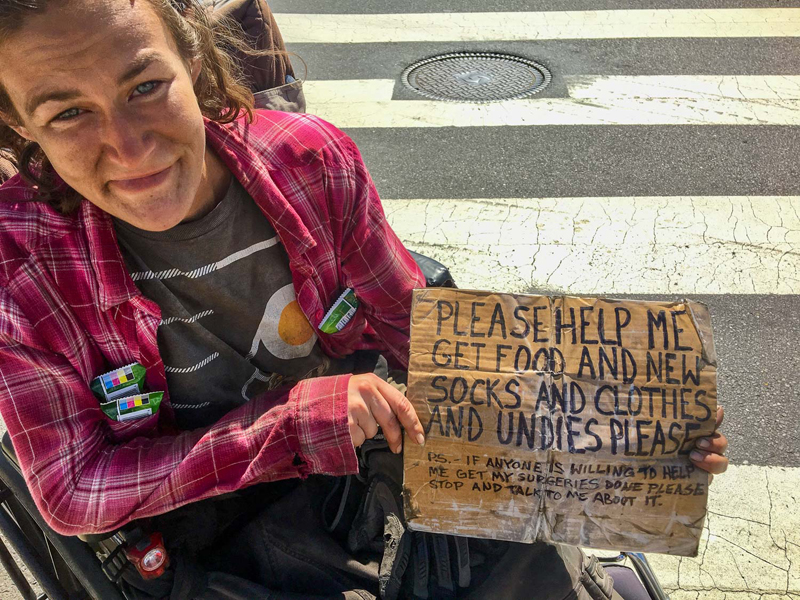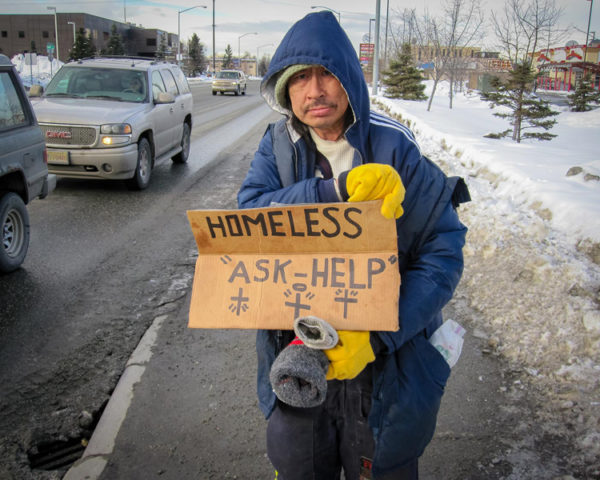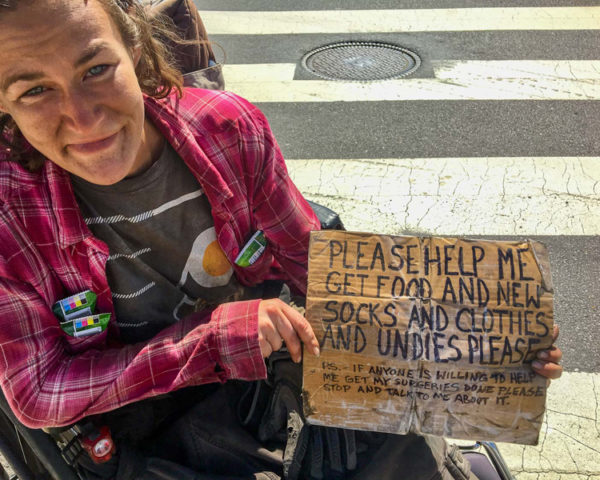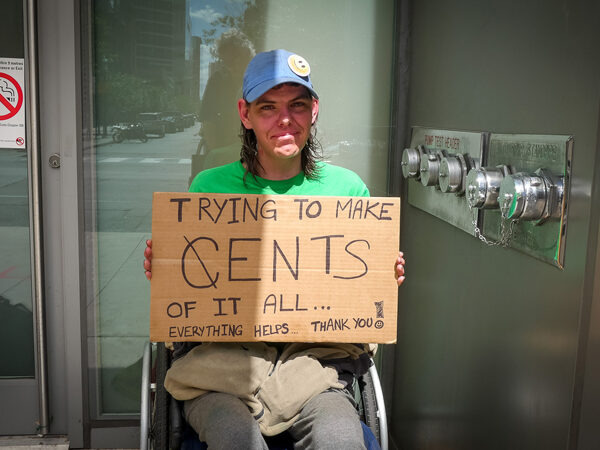Panhandling Facts
Panhandling (or begging for money) in America is often a survival strategy. With few opportunities for work that pays a decent wage, homeless (and housed) individuals may resort to panhandling. This helps pay for a place to stay or for food and other necessities. In cities across the U.S., panhandling is an issue that vexes city officials and leaves regular citizens wondering if they should give money to the person or not.
In reality, the solutions to panhandling are affordable housing and jobs that pay livable wages. Until we solve those two problems, many people in America will continue to see panhandling as one of the few money-making options available to them.
Many persistent myths drive how communities address panhandling. These include many of the following negative stereotypes:
- Money goes to drugs and alcohol.
- Panhandling is lucrative, with people bringing in hundreds of dollars each day, and tens of thousands of dollars each year.
- People who are begging for money are lazy and don’t want to work.
Multiple studies have disproven these stereotypes. For example, a 2013 survey of panhandling in San Francisco found the average panhandler’s salary was $24 per day panhandling. In addition, fewer than half spent the money on drugs and alcohol, while 94 percent spent the money on food. A more recent survey in Philadelphia found that people who panhandle “earn a meager wage, which they use for essentials.”
It also found most people who panhandle would prefer to be employed but face many barriers to getting a job. Lastly, the Philadelphia survey reported the average panhandler’s salary was around $20 a day panhandling. This debunks the myth that people are earning tens of thousands of dollars each year.
Cities Enact Anti-Panhandling Ordinances
Many cities have enacted anti-panhandling ordinances, one of many strategies to criminalize homelessness. According to a report by the National Law Center on Homelessness and Poverty, there was a 103 percent increase in laws prohibiting begging between 2006 and 2019.
Some ordinances to ban all panhandling outright have been found to be unconstitutional. Others create partial limits on panhandling, restricting where a person can ask for money, or requiring permits to ask for money in public. Such ordinances make it impossible for people to beg for money without breaking the law. Many of these local ordinances to limit or impose outright bans on panhandling continue to face legal challenges.
In addition to panhandling ordinances, some cities have employed more creative strategies to discourage the public from giving individuals money. One approach involves installing “parking-style meters” where people deposit money they might otherwise give to people panhandling.
The money is then donated to shelters and other service agencies. While this approach has become increasingly popular, many critics say that it does little to address panhandling. In fact, there is no data that the “parking meter” approach either reduces panhandling or provides substantial resources for service agencies.
To address the root causes of panhandling, cities should focus their time and money not on criminalizing panhandling, but on the real and lasting solutions of affordable housing and employment.












